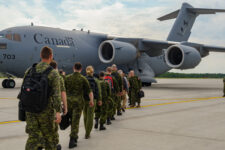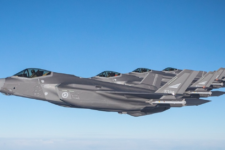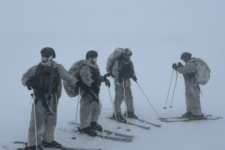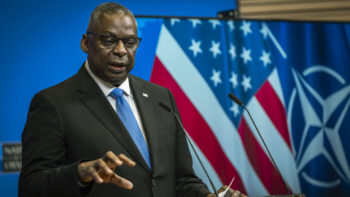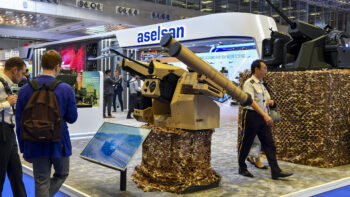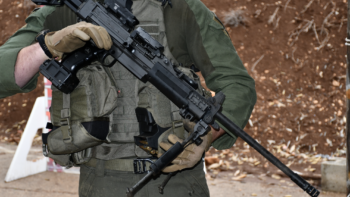 FT. LAUDERDALE: The Army is willing to shed a few more brigade combat teams to become the lighter, faster and more lethal force of the future, Army Chief of Staff Gen. Ray Odierno said today.
FT. LAUDERDALE: The Army is willing to shed a few more brigade combat teams to become the lighter, faster and more lethal force of the future, Army Chief of Staff Gen. Ray Odierno said today.
The Army is weighing a plan to add a third maneuver battalion to the Army’s current force structure, Odierno told attendees today at the Association of the U.S. Army’s annual symposium. By adding that third battalion, service leaders would subsequently drawdown the total number of brigade combat teams from 37 down to 32 to 33 BCTs total, the four-star general said. Initial service plans had the Army dropping down from the current 47 BCTs in the force to 37. Cutting an additional four to five teams and adding the third maneuver battalion, are one of many “forseeable possibilities” service leaders may adopt as they reform the Army’s force structure for a post-Afghanistan world.
The benefits of these changes — if ultimately adopted — would be two-fold, according to Odierno. The additional maneuver battalion, plus the cadre of engineers that would come along with the unit, would give service commanders more flexibility and agility in its forces. The move would also cut down on a number of headquarter and staff elements inside the BCTs, making them less top-heavy and more manuverable. U.S. Army Training and Doctrine Command is leading the BCT restructuring effort and is expected to weigh in on these proposed changes soon. The ability to move and respond quickly will be key, as the Army starts to move out over 50,000 troops from its ranks.
Army leaders are looking to move away from its traditional en-masse troop deployments, to shipping out smaller teams of soldiers more frequently, Odierno told reporters during a briefing shortly after today’s speech. These smaller units will be tied closely to special operations forces already deployed around the world, and depend on partner nation forces to make up for their smaller numbers, the four-star general said. These Army units, along with their special operations counterparts, will take on larger roles in counterterrorism ops and countering weapons of mass destruction. Those missions, particularly in the counter-WMD realm, are where regular Army and SOF “have to work together on,” Odierno said.
On increasing cooperation with U.S. allies, Odierno said service leaders plan to attach one BCT to the NATO Response Force. This deployment, which is the first time Army leaders have dedicated a BCT to that alliance-led force, will help compensate for the service’s decision to pull two BCTs from Europe. The deployment also falls in line with the service’s efforts to build up a slate of “regionally-aligned brigades” to each global combatant command, Odierno said.
These RABs will be primarily tasked with training and assisting foreign militaries. The first of these teams is set to arrive in Africa Command this fiscal year. It will be the first of several the Army hopes to create over the next few years. These brigades will be the first regular Army units designed to do partner nation engagements. These RABs, the deployment to NATO and the smaller number of overall BCTs represents the Army’s new reality, according to Odierno. “I see this as a model for how we do things in the future,” he said.
Out of INF, Army deploys Typhon weapon to the Philippines
“This is a significant step in our partnership with the Philippines, our oldest treaty ally in the region,” said Brig. Gen. Bernard Harrington, commanding general of the 1st MDTF.









